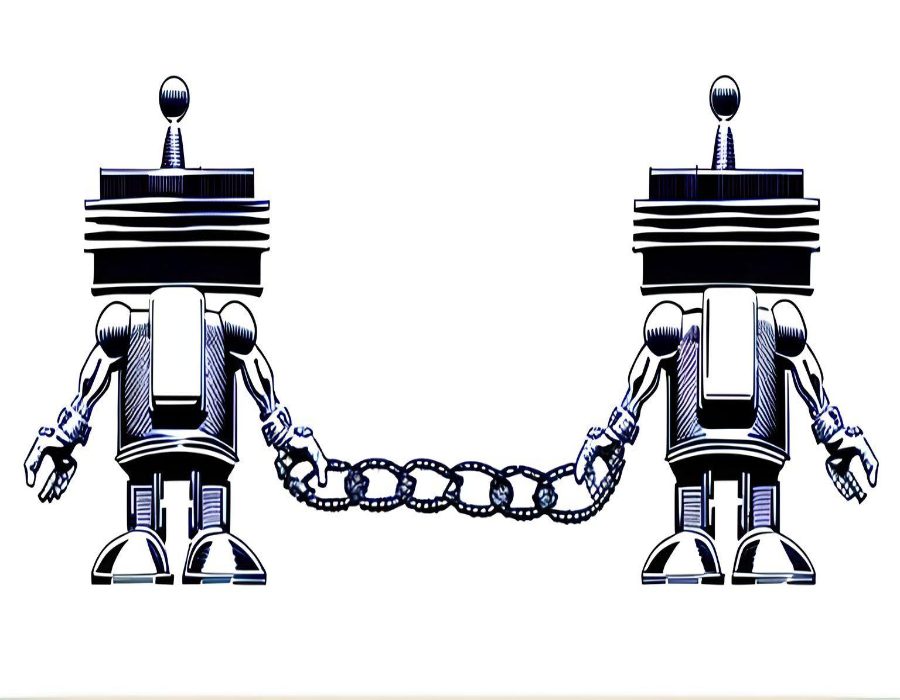Link equity, or link juice, is essentially the value which is passed from one page or site to another.
Ensuring your site has a accumulated a good level of link equity will boost your rankings in the SERPs.
How can build up link equity in your site?
Internal linking
Having a good internal linking strategy helps to distribute your page authority and tells search engines which pages are the most important.
Backlinks
Also known as external links, these are vital for helping search engines to understand how authoritative your site is.
Having covered internal linking previously, we will focus here on backlinks – specifically, generating a high-quality link-building profile.
If you haven’t spent too much time on backlinks before, or you have tried out the odd campaign but not worked consistently on it, now is the time to give your strategy some thought.
There are a number of factors which contribute towards the creation of a backlink profile that search engines will view favourably.
Here is our 7-step formula for getting consistent, high-quality external links that build up a natural backlink profile and help your site to rise through the rankings.
1. The link is on a high-quality domain
Just as you can get good and bad quality food, you can get sites which are held in high regard by search engines- and sites which are poorly built or have low authority.
Getting a link on a high-quality website will send positive signals to search engines. If a site that people generally trust and rely on for quality information is pointing to yours as a place for its visitors to navigate to, then you’re getting a valuable vote of confidence from that domain.
On the other hand, if you get a backlink from a lesser-known site, the vote of confidence won’t count for as much. If you’re not careful, you could even find yourself obtaining backlinks from toxic sites which could register as link spam over time.
So how do you know whether a site is high-quality? One way is to use a keyword research tool such as Ahrefs or Semrush, which apply their Authority Score or Domain Rating to every single site out there.
You can also use your common sense as a guiding factor – after all, a major news site will carry more weight than a little-known site that is poorly built, covered in pop-up ads and contains scraped or clearly AI-generated content.
2. The link comes from a popular page
Once you have found your high-authority site, you want to target a specific page you’d like to get a backlink from.
In some cases, you may be submitting a press release, in which case you’d be focused on the site generating a new page that is dedicated to your story.
However, in other instances, you will be aiming to have the external site link to you on a specific, pre-existing page.
Choose wisely – as we indicated in our internal linking strategy guide, pages which contain a lot of links are generally seen as more popular and therefore authoritative.
Getting in on the action and having your own backlink on such a page will therefore ensure more link equity is passed on to you, giving you a bigger SEO boost.
3. The link is in a good place
Getting a link back to your site is only part of the equation. You may encounter a situation where you note that a site has given you a backlink – but you have to dig around on the page to find it.
Sometimes, sites will put your link towards the bottom of the main copy. This gives the link less weighting than if it were featured towards the start of the content.
Even worse, if links are placed in footers or sidebars, they will be devolved as they are placed in navigational areas of the site. These types of links will be given very little or no link equity.
In the past, SEOs would pay for links in sidebars or footers, but this practice occurred when all links were given equal authority – and this is no longer the case.
In essence, the least effective placement for a backlink is in a sidebar or a footer, and the most effective placement is at the top of the main content.
The bonuses of having a backlink featuring prominently on the main content of a page are that they indicate to both people and search engines that the link is a key source for the story – and it will likely be clicked on more often, which can pass on more link equity.
4. The link is contextual
Once you have ensured your backlink is featured prominently on a page, you want to ensure it appears as naturally as possible. In other words, context is everything.
The best way to ensure a high-quality contextual link is to have the anchor text in the content linking to your page as a source of more information on the topic.
For example, let’s say you run a surfboard e-commerce site and you have developed an interactive tool for surfers to fill out a quiz and find the best surfboard for them.
You might want a content piece on surfboard trends to include an introductory sentence such as ‘So you’ve filled out a surfboard quiz and found your perfect board, but is that enough? Recent studies indicate that….’
Here, the contextual link is placed inside the anchor text ‘surfboard quiz’. Also known as a ‘body content’ or ‘in context’ link, it looks the most natural and will provide the most link equity as it forms part of the main content on the page.
5. The link is on multiple sites
You may have found one authority site which is a fan of your content, and regularly posts backlinks to your pages. However, while you got a little SEO boost initially, you’re noticing that your uplift isn’t continuing. In fact, it’s stagnating, despite the fact you’re getting a weekly or monthly backlink on this site.
The reality is that backlink profiles need to be diversified – much like a portfolio of stocks. There are a number of reasons for doing this.
Firstly, search engines will see your site as having more authority if you have a group of ‘cheerleaders’ posting your backlinks on their sites. Just one of them, waving their pom-poms in the air, is good, but not as good as an entire army!
Secondly, think about what would happen if that editor who loves your content moved onto another job – or the site itself was shut down. Your backlinks would suddenly stop, or you’d lose all of them all together.
It’s therefore wiser not to put all of your eggs in one basket so that your backlink profile remains strong, diverse and steadily growing.
6. The link is dofollow
Before you get too excited about a contextual, well-placed backlink from a new site with excellent authority, check for a little piece of code called “rel=nofollow”.
If you find it, then you won’t be getting the level of link equity you’d been hoping for.
That’s because a number of big publishers will add the nofollow attribute to their external links so that search engines know not to associate their site with the one they’ve inserted a link to.
Whenever you notice a new backlink, right-click on the anchor text and select ‘Inspect’, then check for the attribute.
If you have gained a nofollow link, then you can try simply emailing the author and asking them to consider removing the attribute.
Going forwards, if you note that the site has a habit of publishing nofollow links, it might be worth leaving them off your link building list to avoid wasting time.
That’s because you want to ensure you have dofollow links for as many of your backlinks as possible – or you will not be generating the link equity your site deserves.
7. The URL 404s or doesn’t redirect properly
If you have recently moved or retired a page on your site – or undergone a site migration project – then you want to ensure that any pages you have backlinks to are being redirected correctly to another URL.
It wouldn’t be wise to spend time building up backlinks to a specific page, then retire the page further down the line and have the page 404 when users click on it from the external site.
The good news is that you will retain something close to 80% of the original link equity if you redirect the page using a permanent 301 redirect.
Ensure you stay on top of the pages which have backlink authority and either avoid removing them – or ensure the 301 takes the user to a similar page.
You don’t want to implement a “lazy” 301 redirect strategy whereby every retired page takes the user to the homepage or a section page which is only loosely relevant to the original page they clicked on.
This poor user experience will result in an increased bounce rate, which will simply undo the positive impact you made by generating the backlink and implementing the 301 redirect.
Take the time to smartly 301 your pages to alternatives which still give the user most, if not all, of what they were looking for – and you will retain most of your link equity, along with a satisfactory user experience.
Need help with your link building?
If you’ve realised your backlink profile could do with some work, or you want to take your campaigns to the next level and score links with higher authority sites, get in touch with us and we’ll have a chat about how we can help.
You can also book a Free Acquisitions Workshop where you will receive expert advice on your backlink profiles health, a tailored action plan so work can begin right away, and free resources. Slots are filling up fast. book day to avoid disappointment!












